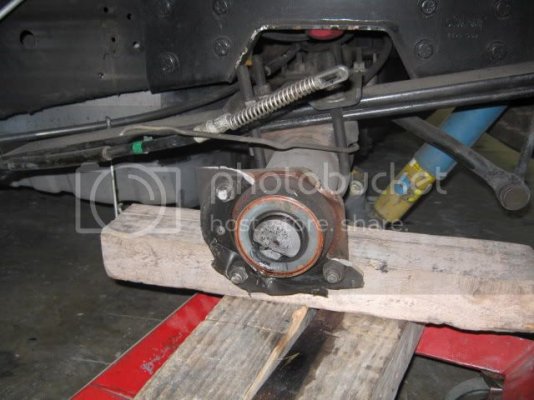From Wikipedia:
Dana 60 Front Axle
History
Ford was the first company to use Dana 60 front axles in 1955. In the mid 1970's the Big Three (automobile manufacturers) all started using this axle. GM began phasing it out in 1988 in favor of Independent suspension, while still offering it in some higher GVWR trucks (V-30) until 1991. Dodge used a Dana 60 up to 2002. 3rd Generation Dodge Rams dropped the Dana 60 in favor of a lighter, reverse cut AAM axle. Ford still uses the Dana 60 front axle. Manufactured in both Kingpin and Ball joint variations, "standard" and "reverse cut" rotation variations and open and limited slip variations. The housing material is Gray iron in early axles and Ductile iron in later axles. GM and Ford Dana 60 axles utilize locking hubs. Dodge Dana 60 axles utilized locking hubs until 1994 when a Center Axle Disconnect (CAD) system was adopted. However model year 2002 Rams phased out the CAD system leaving some 2002 Dana 60 axles permanently locked in.
Big Three variations
GM / Chevy versions are passenger side differential drop, standard rotation gears, kingpin knuckles and 35 Spline axle shafts.
Dodge versions were passenger side differential drop, standard rotation gears, kingpin knuckles and 35 spline axle shafts in early models. The 2nd Generation axles were drivers side with ball joints. 30 Spline axle shafts were used instead of 35 splines, except 2000, 2001 and 2002 models which were equipped with 32 spline axle shafts.
Ford versions are drivers side differential drop, reverse-cut gears, and kingpin knuckles up to 1991. The later axles have ball joints. Ford Dana 60 axles mostly feature 35 spline axle shafts.
Dana 60 aftermarket
The Dana 60 front axle has a great deal of aftermarket/third-party support, including many upgrades. Stronger axle shafts, Universal Joints and ball joints are widely available. As well as a large selection of traction control devices such as Locking differentials and Limited slip differentials. Axle shafts, Universal joints and carriers made from chromoly steel are even available. High capacity differential covers are available that increase the amount of oil the differential holds. These covers also feature Heat sinks that help keep the axle cool.
Dana Super 60
The Dana Super 60 is an upgraded version of the Dana 60 front axle.
Differences in the Dana Super 60 versus the regular Dana 60:
Larger and thicker diameter steel tubes (3.75 inches diameter and 1/2 in thick)
Larger ring and pinion which increase the contact area and overall strength.
Larger Universal Joints which increase strength and steering angle.
Super 60s use 1550 Universal Joints.
Net formed spider gears for increased strength.
All made with 35 Spline axle shafts.
Dana 60 Rear Axle
The Dana 60 rear axle was first introduced in 1955 as a full floating axle in Ford F-250's and is still used today.
Manufactured in both full float and semi float variations. The semi float axles were often rated up to 5,500 lbs and the full float axles were rated up to 6,500 lbs.
Full floating, 30 Spline, variants are common. 33 Spline semi floating, 35 Spline semi-floating and full floating axles exist, but are less common.
http://en.wikipedia.org/wiki/Dana_60

